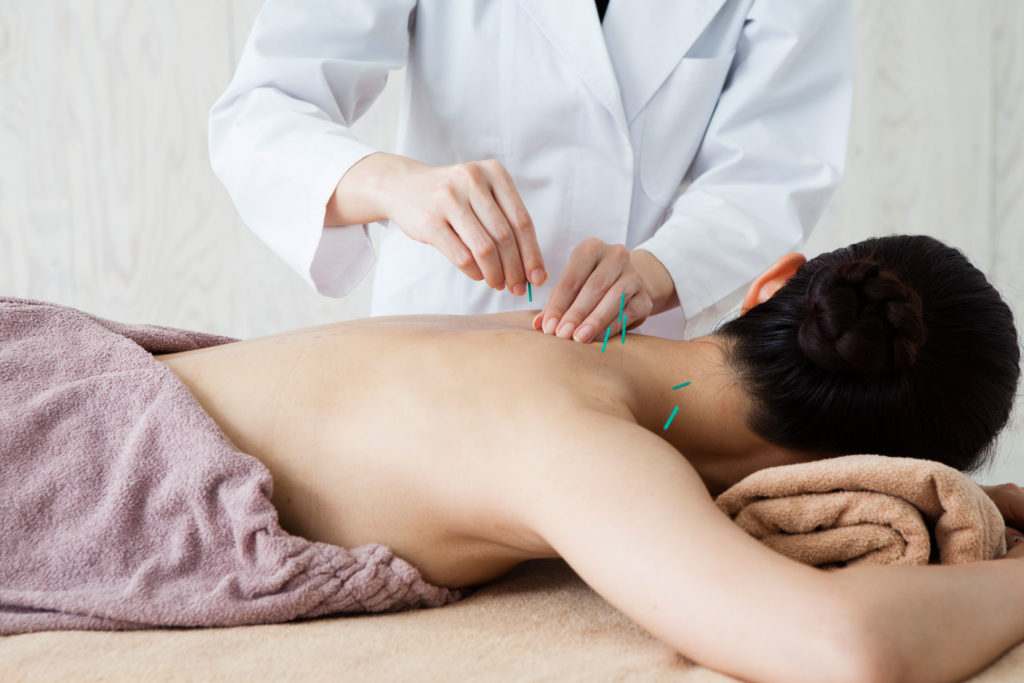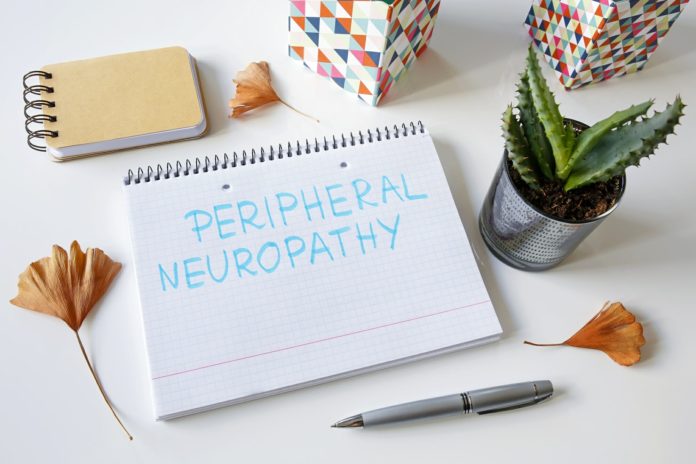What is peripheral neuropathy?
Peripheral neuropathy, the most common form of diabetic neuropathy, is damage to your peripheral nerves that causes weakness, tingling pain, and numbness that may also be stabbing or burning. It often starts in the hand or feet and spreads upward to the arms and feet.
It’s often a result of damage to the peripheral nerves. Peripheral neuropathy can be caused by several conditions including:
• Diabetes mellitus
• Alcoholism
• Traumatic injury
• Infections
• Kidney disease
• Liver disease
• Autoimmune diseases
• Connective tissue disease
• Tumors
• Insect/spider bites
People are unaware of their diabetes and may not know what’s causing some of the unusual sensations they are experiencing. The effects of peripheral neuropathy can develop suddenly or can spread slowly over time. Treatment methods may vary depending on the cause of the condition. Many traditional and natural methods can bring relief and alleviate pain to help you return to your regular activities.

6 Natural Treatments for Peripheral Neuropathy
Treatment for peripheral neuropathy depends on the cause. It focuses on treating the underlying disorder. Some common treatments involve physical therapy, surgery, and injections for increased nerve pressure.
There are also several natural treatments to help reduce symptoms and peripheral neuropathy.
- Quit smoking
If you have diabetes and use tobacco in any form, you are more likely to develop nerve damage than diabetic nonsmokers. Smoking affects your blood circulation and the blood vessels became narrow and less oxygenated blood can get through. Without proper blood circulation, you may experience increased numbness and pain from your peripheral neuropathy. Quitting can help to improve your symptoms. - Exercise
Exercising regularly is one of the simplest ways to manage your diabetes symptoms, help to combat pain, and improve your overall health. Being active can reduce your blood sugar and high blood pressure symptoms, increase strength, and improve your range of motion, which, in turn, can reduce or slow down nerve damage. Exercise can help protect nerves by improving circulation, lowering stress, and reducing cholesterol, which can raise your glucose levels and increase inflammation. Work your way up to exercising for 30–60 minutes daily, doing low-impact exercises like walking, swimming, or cycling.
There are three main types of exercises ideal for people with peripheral neuropathy: aerobic, balance, and stretching.
Aerobic Exercises
Aerobic exercises move large muscles and cause you to breathe deeply. This increases blood flow and releases endorphins that act as the body’s natural painkillers.
Best practices for aerobic exercising include routine activity for about 30 minutes a day, at least three days a week. If you are just starting, try exercising for 10 minutes a day to start.
Some examples of aerobic exercises are:
• Brisk walking
• Swimming
• Bicycling
Balance Training
Peripheral neuropathy can leave your muscles and joints feeling stiff and sometimes weak. Balance training can build your strength and reduce feelings of tightness. Improved balance also prevents falls.
Beginning balance training exercises include leg and calf raises.
Stretching Exercises
Stretching increases your flexibility and warms up your body for other physical activities. Routine stretching can also reduce your risk of developing an injury while exercising. Common techniques are calf stretches and seated hamstring stretches.
Here are some exercises you can do:
Seated hamstring stretch
- Sit on the edge of a chair.
- Extend one leg in front of you with your toe pointed upward.
- Bend the opposite knee with your foot flat on the floor.
- Position your chest over your straight leg, and straighten your back until you feel a muscle stretch.
- Hold this position for 15 – 20 seconds.
- Repeat three times per leg.
Calf raise
- Using a chair or counter, steady your balance.
- Lift the heels of both feet off the ground so you’re standing on your toes.
- Slowly lower yourself down.
- Repeat for 10–15 reps.
Calf stretch
- Place one leg behind you with your toe pointing forward.
- Take a step forward with the opposite foot and slightly bend the knee.
- Lean forward with the front leg while keeping the heel on your back leg planted on the floor.
- Hold this stretch for 15 seconds.
- Repeat three times per leg.
Side leg raise
- Using a chair or counter, steady your balance with one hand.
- Stand straight with feet slightly apart.
- Slowly lift one leg to the side and hold for 5–10 seconds.
- Lower your leg at the same pace.
- Repeat with the other leg.
- As you improve balance, try this exercise without holding onto the counter.

- Essential oils
Essential oils can be administered in several ways. It helps to increase circulation in the body. They also have pain-relieving and anti-inflammatory properties that could boost healing.
For pain relief, you can use a topical approach. Dilute essential oils (a few drops) in 1 ounce of carrier oil such as olive oil. This can prevent the essential oil from causing any skin irritation or inflammation.
Applying these diluted oils to the affected area can reduce stinging and tingling pains from peripheral neuropathy. Diffusing essential oils into the air may also help with some of the symptoms associated with nerve pain, such as lack of sleep, stress, and anxiety.
The following essential oils may help with pain relief.
Lavender
This is practically the Swiss Army knife of essential oils. It can help ease muscles, joint pain, sprains, and backache. Researchers conducted a study in 2015 that found that lavender essential oil can be an effective analgesic and anti-inflammatory. When diluted and applied topically during one test, it provides pain relief comparable to that of the prescription medication tramadol.
Lavender oil helps lessen the pain following needle insertion. Just simply massage gently onto the affected area and wait for wonderful results. Lavender oil is the oil that you can have in your survival kit.
Rose oil
Rose essential oil aromatherapy has been shown to relieve pain associated with periods when women experience abdominal cramping during menstruation. Also, 2013 research suggests that rose oil aromatherapy may also be effective in alleviating pain caused by kidney stones.
Based on a study, researchers suggested that aromatherapy using rose oil could be an effective way to ease pain in patients who’ve had surgery.
Bergamot
Bergamot essential oil is being used to treat neuropathic pain and is also a great way to reduce the symptoms of sprains, muscle aches, and headaches. Research shows that bergamot oil has analgesic effects and can be used in complementary medicine to minimize tension in the body. The linalool and carvacrol compounds found in bergamot oil had a response to pain and other conditions in humans and animals. It founds that the compounds found in bergamot oil have analgesic, anticonvulsant, and anti-inflammatory capabilities.

- Acupuncture
Acupuncture is a technique used to treat headaches, back pain, and joint pain, and to relieve discomfort. The needles used in acupuncture are inserted into the body’s pressure points to stimulate the nervous system. People with neuropathy turn to acupuncture to relieve their chronic pain. It stimulates the blood flow to restore nerve damage and provides an energy balance to the body that can affect your emotional well-being. - Warm bath
Taking a warm bath is thought to soothe and alleviate pain symptoms from neuropathy. Warm water increases blood circulation and stimulates the body, decreasing pain symptoms from numbness. - Caring for your hands and feet
Diabetic nerve damage causes pain and can also affect your ability to feel pain. Make sure to monitor your symptoms and look for any signs of new nerve damage to your legs, feet, hands, or skin. Wash your skin and feet/toenails carefully daily with warm water, especially in skin folds where bacteria and moisture can build up and cause infections, and dry them completely afterward. Apply lotion and avoid getting lotion in between your toes.
To take better care of your feet, check your feet every day for sores, swelling, cuts, and other problems, even if you don’t feel any pain there. Wear clean clothing and socks, and keep delicate skin out of the very hot temperatures (such as very warm showers) and the sun. Wear comfortable, flexible shoes so that they don’t hurt your feet.
Outlook
If you’re looking for alternative treatments for neuropathic pain, the above-mentioned were most likely fin you. As prevention works so much better than treatment.
You may find success with acupuncture and be sure to work with a licensed acupuncturist who has the appropriate credentials.
Exercises can also reduce pain symptoms from peripheral neuropathy. Just make sure to stretch after any workout to increase your flexibility and reduce pain from muscle tightness.
Using essential oils for neuropathy can also be a beneficial and inexpensive way to help ease your pain. They will soothe nerve aches, improve muscle spasms, and enable you to sleep better.
Also, keeping your blood sugar under control to prevent nerve damage is the best way to avoid nerve pain.
Natural remedies have some success in alleviating the painful symptoms of peripheral neuropathy. Be sure when participating in a new treatment method, consult with your doctor first. And if your conditions worsen, or you begin experiencing any irregular symptoms from natural remedies, visit a doctor immediately.



